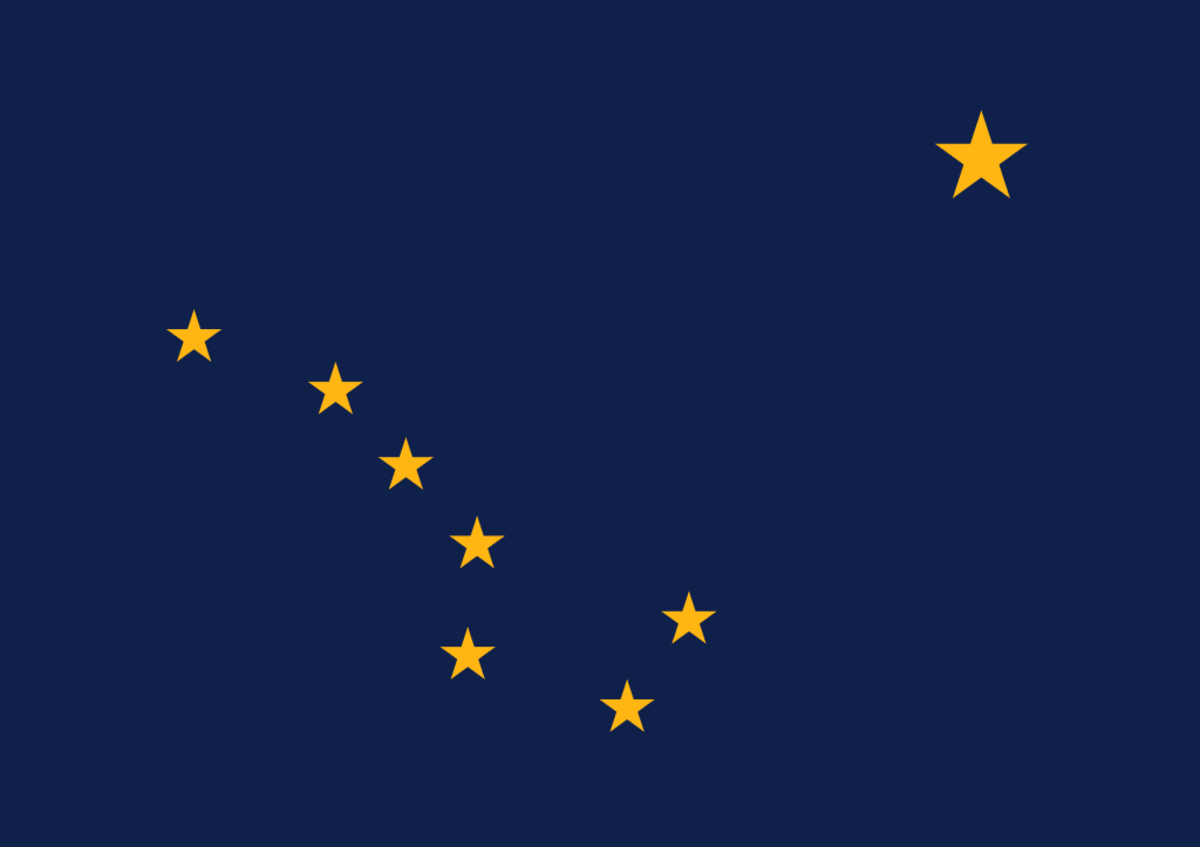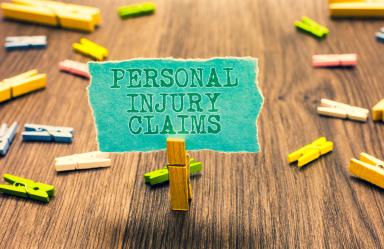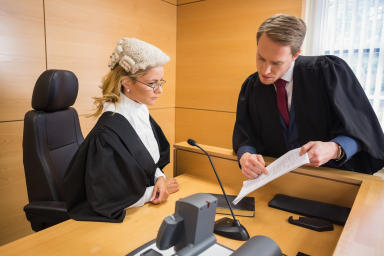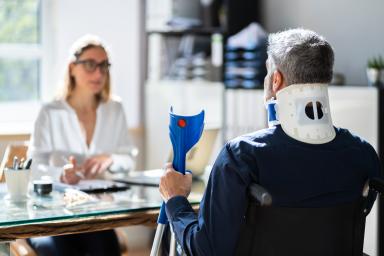Alaska Personal Injury Laws

Personal injury refers to the harm inflicted upon an individual's body or mind as a result of another person's negligence or wrongdoing. In certain cases, the injuries sustained can have lasting and permanent effects.
There have been a series of personal injury-related incidents in Alaska over the years. In 2021, a total of 1,200 injury and illness cases from the workplace were reported in the state. Falls and transportation accidents, on the other hand, were the most common causes of injuries among older people. Since 2014, Alaska has been among the top 10 states with fatalities caused by unintentional injuries.
Personal injury law applies to all types of accidents, whether they are intentional or not. When it comes to a personal injury case, the main factors considered are who was responsible for the accident and to what extent. A plaintiff who is pursuing a personal injury case must have proof that the injury they have sustained resulted from the defendant’s negligence or intentional actions.
This article will discuss the necessary information when pursuing a personal injury case in The Last Frontier.
Grounds for Personal Injury Lawsuits in Alaska
When someone suffers harm or injury due to the negligence or intentional actions of another party, it may warrant a personal injury lawsuit. This type of lawsuit can be triggered by various circumstances, and being aware of the common grounds for such legal action is important.
Here are some common causes of injury that may lead to personal injury lawsuits:
Intentional acts - Personal injury lawsuits may arise when someone intentionally inflicts harm on another person. Examples include cases of battery, assault, or deliberate infliction of emotional distress, where the defendant purposefully engages in physical or emotional harm.
Strict liability - In certain situations, strict liability may apply, where a person can be held accountable for injuries regardless of fault or intent. This typically occurs in cases involving inherently dangerous activities, such as blasting rocks or handling hazardous materials. Even if the person engaged in the action with utmost care, they may still be held responsible for any resulting injuries.
Negligence - Negligence is a primary basis for personal injury lawsuits. When a person fails to exercise reasonable care, breaching their duty of care and causing harm to another individual, it may give rise to a negligence claim. Common examples include car accidents caused by distracted driving or medical malpractice resulting from a healthcare provider's failure to adhere to standard protocols.
Common Types of Personal Injury Cases in Alaska
According to the Centers for Disease Control and Prevention, approximately 29.4 million people seek medical attention in emergency rooms each year for unintentional injuries. This figure proves that there is a huge number of individuals who require medical care due to accidental injuries.
Below are the common types of personal injury cases:
Motor Vehicle Accidents
Vehicular accidents are one of the most common causes of personal injury cases in Alaska. These can result from various factors, such as distracted or drunk driving, speeding, or reckless behavior.
According to the latest statistics from the National Highway Traffic Safety Administration, an estimated 42,795 individuals lost their lives in motor vehicle traffic crashes in 2022. In Alaska alone, a total of 67 fatalities and 259 serious injuries from road accidents were recorded in 2021.
For Alaskans involved in an accident, it is important to immediately report the incident to local law enforcement and their insurance company.
They should also seek advice from a qualified personal injury lawyer, particularly if there are significant injuries, property damage, or disputes over fault. A lawyer can provide guidance on an individual's rights, insurance claims, and potential legal action and help protect their interests throughout the process.
Car Insurance
When it comes to Alaska’s car insurance, the state requires the following:
$50,000 for bodily injury or death per person.
$100,000 for injuries to multiple people in an accident.
$25,000 for property damage.
Drivers are required to have proper insurance in the state, and they have to present such insurance when asked by an on-duty officer. Failure to provide insurance may result in the following penalties:
The driver’s license will be suspended;
The car will be seized and impounded; or
The driver responsible will receive a monetary fine.
Medical Malpractice
Medical malpractice refers to situations where a healthcare professional's negligence or wrongdoing leads to harm or injury to a patient. If an individual suspects medical malpractice, they should contact another healthcare professional for an independent evaluation of their case. They should also gather all relevant medical records and documentation.
Understanding the criteria for proving medical malpractice in Alaska is crucial, as not all poor medical outcomes necessarily indicate malpractice. To successfully prove medical malpractice in Alaska, individuals should be able to present the following:
They should demonstrate that there was a duty of care or that a doctor-patient relationship existed between both parties.
The plaintiff must establish that the defendant failed to meet the appropriate medical standard of care. This involves showing that the defendant's actions or omissions deviated from what a reasonably skilled and competent healthcare provider would have done under similar circumstances.
The plaintiff must also demonstrate that the defendant's breach of the medical standard of care was the direct cause of the plaintiff's damages.
Slip-and-Fall Accidents
Slip-and-fall accidents occur when a person is injured due to a hazardous condition on someone else's property. This can include wet floors, uneven surfaces, or poorly maintained premises.
According to the Alaska Department of Health, falls constitute the primary cause of severe injuries necessitating medical attention, particularly among adults aged 55 and older. 2016 data revealed that the total billed expenses for falls-related injuries among Alaska seniors amounted to approximately $135 million. This shows a significant increase, almost triple the amount billed in 2012, in the growing financial burden and healthcare costs that come with fall-related incidents among the elderly population in the state.
Anyone can easily suffer from a slip-and-fall accident due to the presence of danger in certain places. This is where premises liability comes in.
Premises liability occurs when an accident happens on someone else’s property that is not properly maintained. Getting hurt by falling debris, slipping due to a liquid spill on the floor, or tripping on uneven surfaces are just a few examples.
To establish who is liable in a slip-and-fall accident, individuals should prove that the property owner did not follow safety standards in maintaining their premises and that their negligence caused physical harm to victims.
Product Liability
Product liability occurs when a defective product causes harm or injury to a consumer. This can be due to a design defect, a manufacturing defect, or inadequate warnings or instructions. For instance, if a consumer discovers a sharp foreign object in their food and sustains injuries, they may have grounds for a product liability claim against the food manufacturer or distributor.
If an individual suffers injuries due to a defective product, they should preserve the product as evidence and seek medical attention for their injuries. They must also keep any receipts, warranty information, or packaging related to the product.
Comparative Negligence in Alaska
Comparative negligence is a legal principle used in Alaska that assigns fault proportionately in personal injury cases. It means that if someone is injured due to another person's negligence, any damages awarded will be reduced based on the injured party's level of fault.
This principle ensures that damages are adjusted based on the respective levels of fault assigned to each party involved. It is important to understand this principle when pursuing a personal injury claim in Alaska, as it can significantly impact the amount of compensation awarded.
Alaska Claims Process
During an accident in Alaska, taking the right steps can have an impact on one’s case and their ability to receive fair compensation for their injuries.
For victims or plaintiffs, the first thing they need to keep in mind when involved in an accident is to get immediate medical care. Even if the injuries appear minor, obtaining a comprehensive medical evaluation is essential to avoiding further injuries. Victims are also advised to document the accident scene and collect witness statements, which can be used later on during the legal process. Lastly, they must speak to a personal injury attorney to determine the next steps.
Assuming they have already hired a lawyer, the first step of the claims process begins with the latter negotiating with the at-fault party’s insurance company. If the insurer refuses to pay the damages owed to the victim, a lawsuit can be filed against them.
The lawyer will be responsible for obtaining police reports and medical records, as well as interviewing witnesses and investigating the situation to establish who should be held liable in the case. Victims should let their lawyers know the extent of the injury they have incurred, how much they have already spent on medication, and any future treatment they will need.
How Much Can Someone Sue for an Injury in Alaska?
Damage caps are regulations that impose limits on the amount of damages that can be awarded. Personal injury damages typically fall into two main categories: compensatory and punitive.
Compensatory Damages - are intended to indemnify the injured party for the losses and harm they have suffered due to the incident. These damages are meant to restore the individual to their original circumstances before the injury occurred. Compensatory damages can be further divided into economic and non-economic damages.
Economic damages - are tangible losses that can be quantified in monetary terms. Examples include medical expenses, lost wages or earning capacity, property damage, and rehabilitation costs. There is typically no cap on economic damages for personal injury cases in Alaska.
Non-economic damages - are intangible losses that are not easily quantifiable in monetary terms. These include pain and suffering, emotional distress, loss of enjoyment of life, and loss of consortium. In Alaska, non-economic damages for general personal injury cases are capped at $400,000 or the plaintiff's life expectancy in years multiplied by $8,000, whichever is higher. If the injury results in severe disfigurement or impairment, the cap may be raised to $1,000,000.
Punitive Damages - are reserved for cases where the responsible party's conduct is considered "outrageous" according to state law. To be eligible for punitive damages, the plaintiff should demonstrate that the defendant’s behavior showed malice or a blatant reckless disregard for others’ safety. The cap for punitive damages is three times the amount of compensatory damages or $500,000. If the act is found to have intent or is motivated by financial gain, the cap for damages becomes $7 million.
Statute of Limitations in Alaska for Personal Injury Claims
In Alaska, the statute of limitations establishes the time limit within which individuals must initiate legal proceedings for personal injury cases. Individuals need to understand and adhere to these time limits to preserve their right to seek compensation for their injuries.
Generally, personal injury actions must be initiated within two years from the date of the injury, as stated in Alaska Stat. 9.10.070. This means individuals must file a lawsuit within two years of the incident that caused their injury. If the deadline passes and no legal action has been initiated, the individual may be barred from pursuing a claim for damages.
However, there are certain situations where the clock may start ticking later. For instance, if the injury was not immediately discovered or the plaintiff was a minor at the time of the incident, the statute of limitations may be extended.
Discovery Rule
Alaska has implemented a "discovery rule" that can affect the statute of limitations. This rule states that the limitations period begins to run when the injured person becomes aware or should have reasonably become aware of the existence of the cause of action. In other words, if the injury or its cause is not immediately apparent, the statute of limitations may be tolled until the injured party discovers or should have discovered the basis for the legal claim.
Understanding the discovery rule is crucial for individuals seeking personal injury claims in Alaska. It is advisable for those planning to bring a claim to seek the guidance of a qualified personal injury attorney who can provide specific advice based on the facts of their case and ensure that all necessary actions are taken within the applicable deadlines.
Legal Resources for the Injured in Alaska
Alaska Bar Association
The Alaska Bar Association provides valuable resources for individuals seeking legal assistance for their personal injury situations. One notable service the Association provides is its Lawyer Referral Service, which helps Alaskans connect with qualified attorneys specializing in personal injury cases. By utilizing this service, individuals can be matched with an attorney who has the necessary expertise and experience to handle their specific legal needs.
The website also features a directory of member attorneys, allowing individuals to search for lawyers based on their practice areas, including personal injury. Users can easily access details about attorneys' backgrounds, areas of expertise, contact details, and other relevant information that can help them make informed decisions about their legal representation.
Alaska Legal Services Corporation
The ALSC offers free legal aid to low-income and disadvantaged residents in Alaska. They aim to safeguard the safety, well-being, and family stability of Alaskans by ensuring their access to a strong and reliable legal counsel. On average, the institution helps 7,000 individuals per year address their legal problems, including personal injury.
Alaska Department of Law
The Alaska Department of Law’s website serves as a comprehensive resource that offers insights into the state's legal landscape. This information is essential for personal injury victims as it helps them understand the legal framework, state laws, regulations, and government agencies that may be involved in their cases.
It also provides victim-witness assistance, wherein if an individual becomes a victim of a crime, they can find support from a designated representative within the district attorney's office.
Disability Law Center of Alaska
The DLCA is a nonprofit organization that provides legal aid, advocacy, and information to people with disabilities in Alaska. As a federally designated Protection and Advocacy agency, DLCA is dedicated to protecting and promoting the rights of individuals with disabilities throughout the state.
Expertise.com StaffAuthor
Step into the world of Expertise.com, your go-to hub for credible insights. We don't take accuracy lightly around here. Our squad of expert reviewers, each a maestro in their field, has given the green light to every single article you'll find. From rigorous fact-checking to meticulous evaluations of service providers, we've got it all covered. So feel free to dive in and explore. The information you'll uncover has been stamped with the seal of approval by our top-notch experts.




